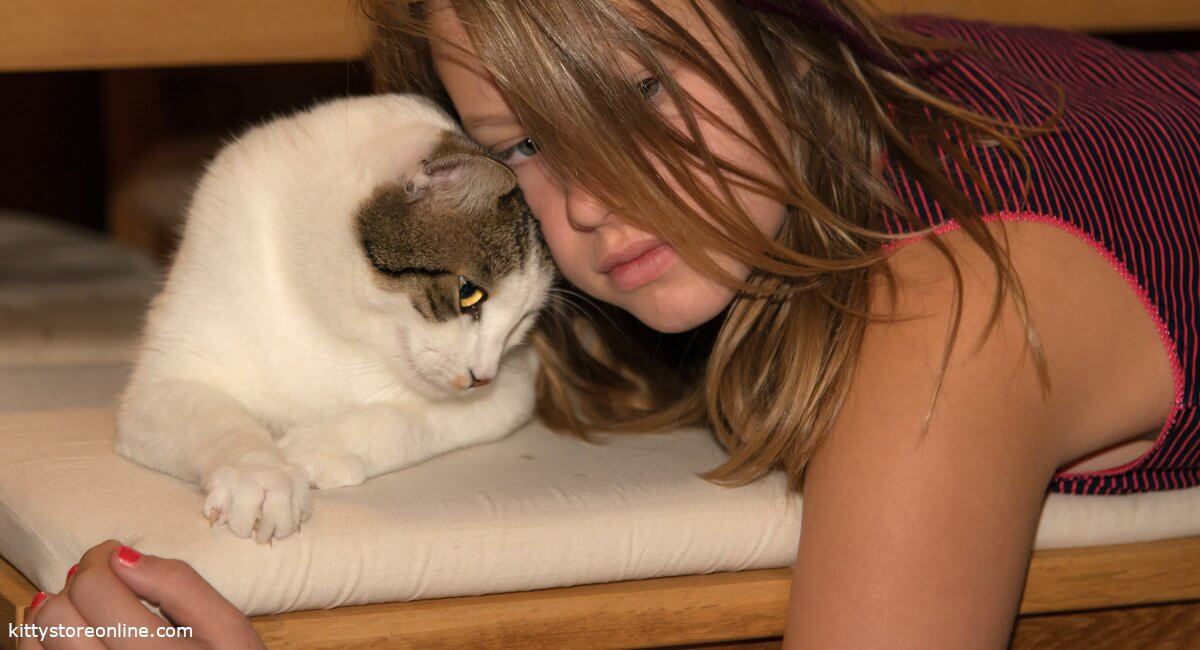Yes, cats, like all mammals, also go through puberty. Puberty marks the transition from kitten to adult cat, from cute kitten to adult cat ready to reproduce. In female kittens, puberty begins around the third month of life. Female cats are usually sexually mature between the sixth and ninth month.
Oriental cats (Siamese, Burmese Abyssinian) are sexually mature even earlier, so between the 4th and 5th month. Large cat breeds (forest cats, Maine Coon) become sexually mature only with at the age of one year. Forest cats are considered mature even at the age of three years. Also, it was observed that long-haired cat breeds became sexually mature later than short-haired cat breeds. Male cats reach puberty at the age of five months. The ability to procreate is pronounced between the 9th month and the first birthday. The puberty of cats lasts about half a year. During this time the hormone balance changes and also the voice sounds more adult with the end of puberty and after a kind of “voice break” especially in male cats . However, there is no sudden growth spurt during this time and also no change of coat or skin impurities.
How does puberty manifest itself in cats?
As with humans, puberty expresses itself in a roller coaster of emotions. Moods can change from one moment to the next. If cats come into puberty, it can be that they forget once learned rules again. They do something, although they know exactly that they are not allowed to do it. Boundaries are tested anew. Cats in puberty decide to make daring climbs, from which they often have to be rescued, and they provoke other conspecifics. Even though they know they’ll get the short end of the stick. The favorite toy or food is suddenly no longer interesting. Then puberty can set in. Like pubescent teenagers, cats test boundaries during puberty. Male cats become daredevils and female cats play devotedly with stuffed mice. In addition, sexually mature females go into heat. The term “in heat” does not come by chance. In order to impress their males, they roll over the ground meowing and also become very attached to their humans. Female cats may begin to make scent marks with urine to attract the attention of potent males. The marking with urine marks will become a habit if the queen is not spayed promptly. During the summer months, female cats can come into heat every month. This means a lot of stress. Mating males begin to mark and spray foul-smelling pheromones to mark their territory and warn off rivals and beguile the ladies. However, the smell is rather intrusive to human noses. Male cats begin to test their strength in scuffling like a real macho man.
What can I do?
You need a lot of calm, patience and a lot of understanding with pubescent cats, when the behavior changes unpredictably and erratically from velvet paw to house tiger. A real test of patience! As in the past, reward desired behavior and clearly say “no” to undesired behavior. Do not reward unwanted behavior, begging for food, even if the cat mews so heartbreakingly. Catnip or pheromone preparations can ease the stress of puberty for the cat. If sexual maturity is imminent, the question of neutering also arises. Male cats can be neutered from the age of six months, female cats at the age of 6-12 weeks. This will make puberty much more relaxed for cats living alone, and you will prevent uncontrolled reproduction by outdoor cats whose kittens die miserably from infectious diseases. It is best to discuss the right time for neutering/spaying with your veterinarian. Neutering can prevent urine marking in places you don’t want. However, if the male cat is already marking, the result is 50/50 that the male cat will stop marking after neutering.
If puberty is over, the life of the cat becomes calmer again and up to 19 more years. The cat food carries from now on the addition “Adult”
Neuter before or after puberty?
Cat or tomcat should be neutered in time, especially as an outdoor cat. Den no cat bring in the year twice three to five young to the world. Unneutered male cats are often involved in territorial fights and come home from their forays with major or minor injuries. In fights with conspecifics, the male cat can become infected with Feline AIDS (FIV). Neutering under general anesthesia is a routine procedure for a veterinarian. In both cats, an incision is made through the abdominal wall and the ovaries are clamped and removed. In the male cat, the vas deferens are tied off and the testicles are removed. Castration or sterilization? With castration, all hormonally controlled processes are stopped. With sterilization, all that is achieved is that the cat can no longer produce offspring. The readiness to mate and the heat remain. When is the right time? With a female cat the time is freely selectable. She can also be spayed during the heat. Male cats can be neutered at the sixth month of life, preferably ‘promptly with the beginning of marking. Once a male cat has become accustomed to marking, he usually does not stop after neutering. Male cats neutered too early become high-legged.
Do neutered cats get fat?
Castration puts an end to hormone production. Cats consume fewer calories than before. Excess is stored in fat pads. If they are fed the same amount of food as before, cats get fat. Get advice on feeding from the vet, whether to reduce the amount of food or use a reduced-calorie food from now on.








